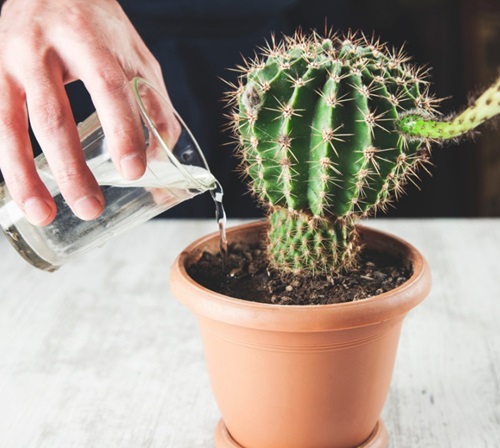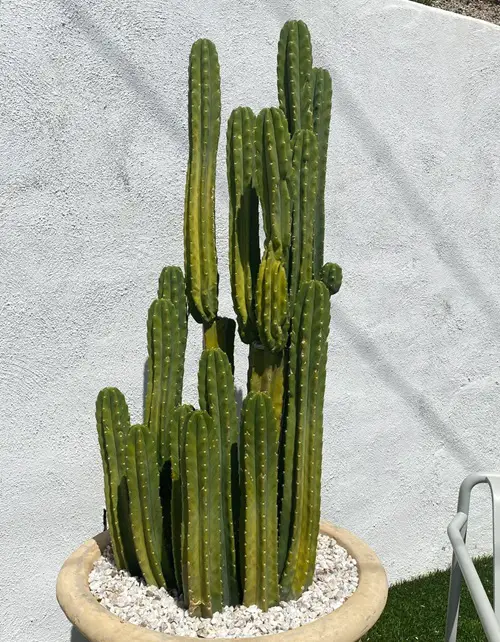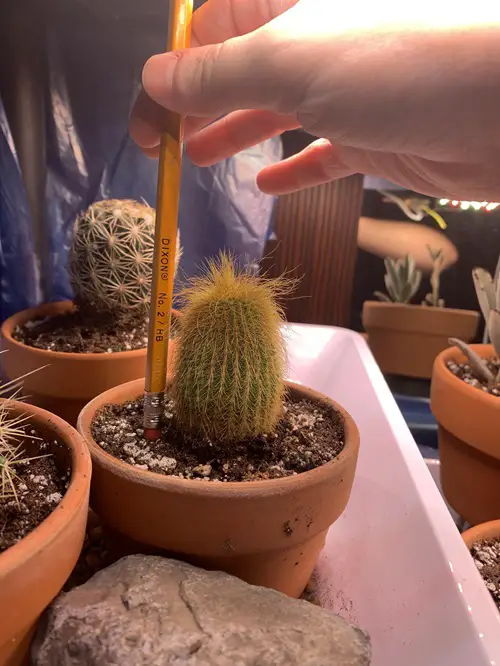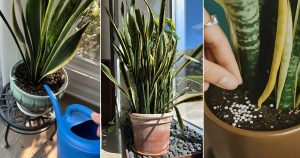Are you wondering what nutrients and water are needed for a cactus? Let’s find out what these desert dwellers require to thrive!
We all know how low maintenance and adaptable they are when growing Cacti as houseplants. However, like all plants, they too need the right care and provision of nutrients and minerals to flourish. So, here is a guide to learning about their requirements.
What are the Nutrients and Water Needs for a Cactus?

Cacti are plants that thrive in harsh desert conditions, so typically they do not demand much to thrive. But factors like sunlight, air, water, drainage, and nutrients are the key requirements. So, here we focus on the details of the nutrient and watering needs.
Nutrient Needs of a Cactus
The first thing that pops up when you talk about nutrients is fertilizers, right? Definitely yes! Because that is where Cacti absorb nutrients like nitrogen, phosphorus, potassium, calcium, magnesium, and sulfur. Altogether these nutrients are also classified as micronutrients and macronutrients.
So, do we need to provide each one separately? No, that is not how it’s done, rather all of these nutrients are present together in different organic matters, fertilizer sprays, or powders and there are many other organic options available as well. Keep reading along and all your confusion will be cleared!
1. Primary Nutrients (NPK)
Nitrogen-phosphorus-potassium, are three main nutrients as Nitrogen (N) helps in the growth of stems and leaves. Phosphorus (P) is good for root development and flowering. Potassium (K) benefits overall plant health.
These are the basic nutrient composition your fertilizer should contain whenever you feed your plants. Secondly, where will you get these? Generally when you make a potting mixture, especially for cacti, include organic compost, small chunks of coconut, bone meal, and various other options that are available in your region.
This is mostly enough for your slow-growing cacti to get all the nutrients from it and up to 6 months you may even not be required to add extra feeding. But, when the requirement comes you can opt for store-bought fertilizers that come in various ratios of NPK. For cacti, the ratio of 10-10-10 is good enough, and you need to dilute it before using it.
Pro Tip: Make sure you feed with chemical fertilizers only during the active growing season and not during their dormant period. Because it will rather make the soil too acidic and eventually your cacti won’t be able to absorb enough and might die.
2. Secondary Nutrients and Micronutrients
Secondary nutrients help to provide support in various metabolic activities that take place inside the plant such as protein synthesizing, plant growth hormone functions, photosynthesis, chlorophyll production, and so on. As much as the primary nutrients are important for a plant so are the secondary nutrients. The deficiency of any one of them can lead to several nutrient-deficiency diseases.
These nutrients are present in the soil, water, and the fertilizer you provide. Also, remember that the supply of nutrients is mostly required during the growing season and a little less in the cooler months. Besides, there are store-bought fertilizers and organic options from where your cacti can absorb the nutrients for their healthy and happy growth.
Watering Requirements of a Cactus
The water requirements of Cacti are very simple, less is always more! Because they are basically, drought-tolerant plants. Moreover, they have the ability to store water in their stems and segments to survive in arid environments. However, it also depends on your region and the climate there along with the fact whether your cacti are indoors or outdoors. Let’s discuss more about it.
1. When To Water
Go with this simple trick of watering only when the soil is dry. During the summer season water once every 2-3 weeks but allow the soil to dry out up to at least one inch deep. Besides, during the winter season watering is completely optional, in fact even once a month is enough. Because they do not grow much in their dormant period.
Pro Tip: Check the soil by sticking your finger or pencil one inch deep and if it seems dry then only water. Stick to this to ace the skills of watering your cacti!
2. How to Water
You can always use the “soak and dry” method. For this you need to water deeply until the excess water drains out from the bottom drainage holes. After that wait until the soil is completely dry before watering again. With this, you will never overwater your plants else overwatering can cause a lot of issues like root rot and fungal diseases.
3. The Type of Water

For cacti, they are good with all kinds of water like tap water, RO purified water, distilled or rainwater. However, for indoor ones, RO water is always said to be the best choice because sometimes what happens is that in urban cities the tap water seems to contain more minerals that make the soil too acidic. This may harm the growth of your houseplants so whenever possible opt for RO water.
How good it is to see how you are curious enough to learn about your plants! So, provide your cactus with the right balance of water and nutrients to keep it thriving. If you have any doubts do write to us in the comment section below.









